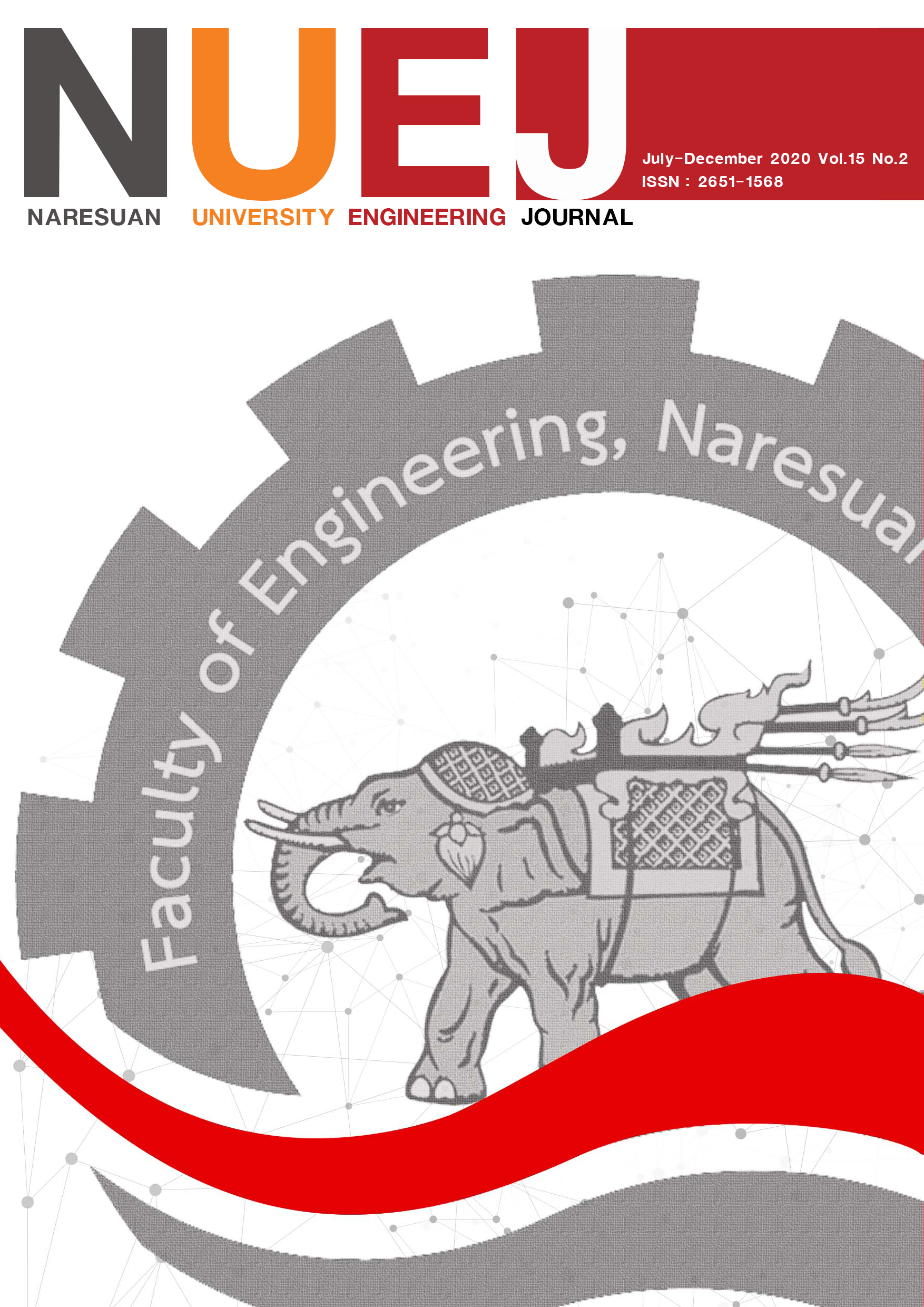The Parametric Study of Soil Slope Stabilized with Geotextile Sand Container Based on Review Works and Finite Element Analysis
Main Article Content
Abstract
This study aimed to evaluate influential characteristics of the so-called geotextile sand container (GSC), affecting to an increase of its maximum compressive strength and apparent cohesion for applying slope stability improvement. This evaluation was based upon an established relationship (Matsuoka et al., 2000) between the capacities of geotextile tensile strength and filled sand properties. The influential factors used in this study were geotextile tensile strength depending upon types and thicknesses and the internal friction angle of filled sand depending upon types, strength, and density, and width and depth of GSC. Study results revealed higher geotextile tensile strength, and filled sand internal friction angle, better shear strength of GSC. Besides, a decrease of the geotextile container depth resulted in a significant increase in the GSC strength. However, an increase in the geotextile container width showed a slight increase in the GSC strength. For the slope stability improvement with GSC through the finite element simulation, study results demonstrated that GSC could enhance better slope stability than that of one without GSC. However, the slope stability improvement with GSC must consider the affecting factors of GSC arrangement patterns on a slope, a depth of a GSC stack layer, and an inclination degree of a slope.
Article Details
References
Akter, A., Crapper, M., Pender, G., Wright, G., & Wong, W. S. (2012). Modelling the failure modes in geobag revetments. Water Science and Technology, 65(3), 418–425.
Ansari, Y., Merifield, R., Yamamoto, H., & Sheng, D. (2011) Numerical analysis of soilbags under compression and cyclic shear. Computers and Geotechnics, 38, 659-668.
Hataf, N., & Sayadi, M. (2018). Experimental and numerical study on the bearing capacity of soils reinforced using geobags. Journal of Building Engineering, 15, 290–297.
Liu, H. B., Yang, G. Q., Wang, H., & Xiong, B. L. (2017). A large-scale test of reinforced soil railway embankment with soilbag facing under dynamic loading. Geomechanics and Engineering, 12(4), 579–593.
Liu, S.-H., Gao, J. J., Wang, Y. Q., & Weng, L. P. (2014). Experimental study on vibration reduction by using soilbags. Geotextiles and Geomembranes, 42(1), 52–62.
Liu, S.-H., Lu, Y., Weng, L. P., & Bai, F. Q. (2015). Field study of treatment for expansive soil/rock channel slope with soilbags. Geotextiles and Geomembranes, 43(4), 283–292.
Matsuoka, H., & Liu, S. H., (2003). New earth reinforcement method by soilbags (‘‘donow’’). Soils and Foundations, 43(6), 173–188.
Matsuoka, H., Chen, Y., Kodama, H., Yamaji, Y., & Tanaka, R. (2000). Mechanical properties of soilbags and unconfined compression tests on model and real soilbags. Proceedings Of the 35th Japan National Conf. on Geotech. Engrg (pp. 1075-1076). Japanese.
Recio, J., & Oumeraci, H. (2009). Processes affecting the hydraulic stability of coastal revetments made of geotextile sand containers. Coastal Engineering, 56(3), 260–284.
Tantono, S. F., & Bauer, E. (2008). Numerical simulation of a soilbag under vertical compression. The 12th international conference of International Association for Computer Methods and Advances in Geomechanics (IACMAG) (pp. 433-439). Goa, India.
Wang, L. J., Liu, S.-H., & Zhou, B. (2015). Experimental study on the inclusion of soilbags in retaining walls constructed in expansive soils. Geotextiles and Geomembranes, 43(1), 89–96.
Wen, H., Wu, J. J., Zou, J. L., Luo, X., Zhang, M., & Gu, C. (2016). Model tests on the retaining walls constructed from geobags filled with construction waste. Advances in Materials Science and Engineering, 2016, 1-13. https://doi.
org/10.1155/2016/4971312
Wu, J., Hesham El Naggar, M., Li, X., & Wen, H. (2020). DEM analysis of geobag wall system filled with recycled concrete aggregate, Construction and Building Materials, 238, 117684.
Xu, Y. F., Huang, J., Du, Y. J., & Sun, D. A. (2008). Earth reinforcement using soilbags. Geotextiles and Geomembranes, 26(3), 279–289.


